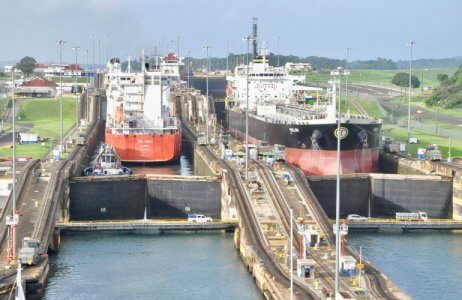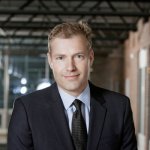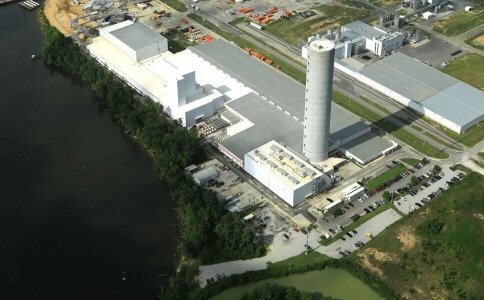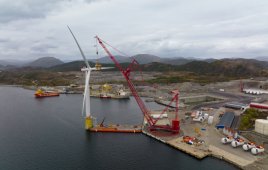By Thomas Dahlgren, President and CEO, COWI North America
Commercial-scale floating offshore wind is approaching fast. In the United States, floating offshore wind is the only option on the West Coast and off the coast of Maine where the water depths preclude using bottom-fixed foundations. The Bureau of Ocean Energy Management (BOEM) has announced plans to hold seven new offshore wind lease sales by 2025 including offshore California in second half of 2022 and in the Gulf of Maine in 2024. Biden’s 30 GW by 2030 plan is swiftly moving from ambitious aspiration to definitive action and it includes floating wind. We may also see more floating offshore wind in the Northeast, beyond the coast of Maine.
While the West Coast and Gulf of Maine’s geography has always dictated the need for floating offshore wind solutions, once BOEM’s forthcoming leases have been executed on the East Coast, almost all feasible plots below 60-m water depth will have been committed. To push further offshore in the Northeast will require developers to seek floating solutions suitable for the deeper waters.
If we are to fully unlock commercial viability for every site – be it on the East or West Coast – it is imperative that each project is optimized to take account of the site’s specific conditions, fabrication and port capabilities, operations and maintenance options, local content requirements and stakeholders, and thoughtfully interweave sustainable solutions.
Materials and fabrication
Full U.S. fabrication will require a substantial level of coordination and investment that will be influenced by each state’s requirement for local content. Equally, BOEM may also stipulate U.S. labor and content restrictions as lease requirements in the upcoming wind energy area auctions.
Developers and contractors may find they need to engage with each other at an earlier stage so that the eventual design can be uniquely tailored to that project and to the local resources available – be that optimizing the foundation design for minimum draft to use a specific port or tailoring the hull design to a local well-respected steel fabricator’s automation capability. Or perhaps the best solution is to divide the fabrication of the hull with major components built at a more remote facility and transported to facilities more local to the site for assembly and installation of the turbine.
Sustainability is a core consideration too, particularly for developers whose shareholders and stakeholders have a strong interest in total life cycle emissions and socioeconomics. Of course, some solutions will always be more carbon intensive than others – depending on their steel and concrete content. However, procurement can also impact the project’s carbon footprint. While shipping steel components from Asia Pacific to the United States might be more cost competitive, depending on location, it can also be more carbon intensive in comparison to local suppliers who may only be marginally more expensive.
Port and marine
 Industry is increasingly focused on floating designs that allow for shoreside installation of the turbine – such as semi-submersibles – that can simply be floated out of port intact and are seen as inherently advantageous. However, most offshore projects, both fixed and floating, are limited in some way by regional port conditions and marine capabilities.
Industry is increasingly focused on floating designs that allow for shoreside installation of the turbine – such as semi-submersibles – that can simply be floated out of port intact and are seen as inherently advantageous. However, most offshore projects, both fixed and floating, are limited in some way by regional port conditions and marine capabilities.
The West Coast has a history of constructing offshore structures for oil and gas as well as ships and has a skilled marine workforce to call upon. However, on both the West and East Coasts there are few ports that are deep enough, have adequate area and are not behind bridges that are ready to use, and there are none that can accommodate the assembly of the most affordable floating substructure – the spar – which requires very deep water. As a result, there are several studies underway to understand what port upgrades might be possible, spanning everything from pier strength-bearing to opportunities for improved port utilization. Additionally, fabrication can be divided among multiple facilities including partial assembly in the Gulf of Mexico for West Coast installations, however, it comes with the coordination of navigating large components through the Panama Canal. Module fabrication in the Gulf of Mexico for use in the Northeast has less challenging logistics.
If the industry is to reach deployment, cost and local content goals, the logistics of assembly will be a key consideration and one that will require a certain level of flexibility that a traditional type of solution may not be able to accommodate. A tailored approach can flex to, or even innovate around, limitations and, conversely, take advantage of new capabilities and resources as they evolve. These tailored solutions must also be de-risked to achieve the technical and commercial certainty that developers and suppliers alike require to make necessary commitments.
ESG and local benefits
While the industry is very attuned to developing projects that are sympathetic to their immediate environmental surroundings, developers often find it more of a challenge to identify and quantify what further sustainability or social benefits a project might be able to achieve more broadly. Political support will be important for driving this agenda forward. New York City’s recently announced “offshore wind vision” is an excellent example of this in practice, where 40% of job and investment benefits are to be directed toward women, minorities and environmental justice communities. In practice this will mean that developers will need to reinvigorate some of their established supply chain processes to proactively contract with minority- or women-owned businesses, for example.
Realizing cost competitiveness
 A tailored approach to floating offshore wind development is the only truly viable way to achieve cost competitiveness while delivering on Biden’s challenge. Anything less risks leaving opportunities for cost savings, efficiencies and community benefits unrealized and, at worst, could stifle innovation and industry progress.
A tailored approach to floating offshore wind development is the only truly viable way to achieve cost competitiveness while delivering on Biden’s challenge. Anything less risks leaving opportunities for cost savings, efficiencies and community benefits unrealized and, at worst, could stifle innovation and industry progress.
It is an approach that has proved itself in the bottom-fixed market repeatedly, where adapting designs to the limitations and opportunities present in the supply chain has been crucial to promote serial production and to bring down costs.
Finally, this is not just a consideration for the U.S. market; emerging markets around the world stand to benefit greatly from taking an approach that will always get the most out of the project – be it cost, community or carbon – regardless of the confines at play.
 Thomas Dahlgren is president and CEO of COWI North America.
Thomas Dahlgren is president and CEO of COWI North America.
Filed Under: Featured





